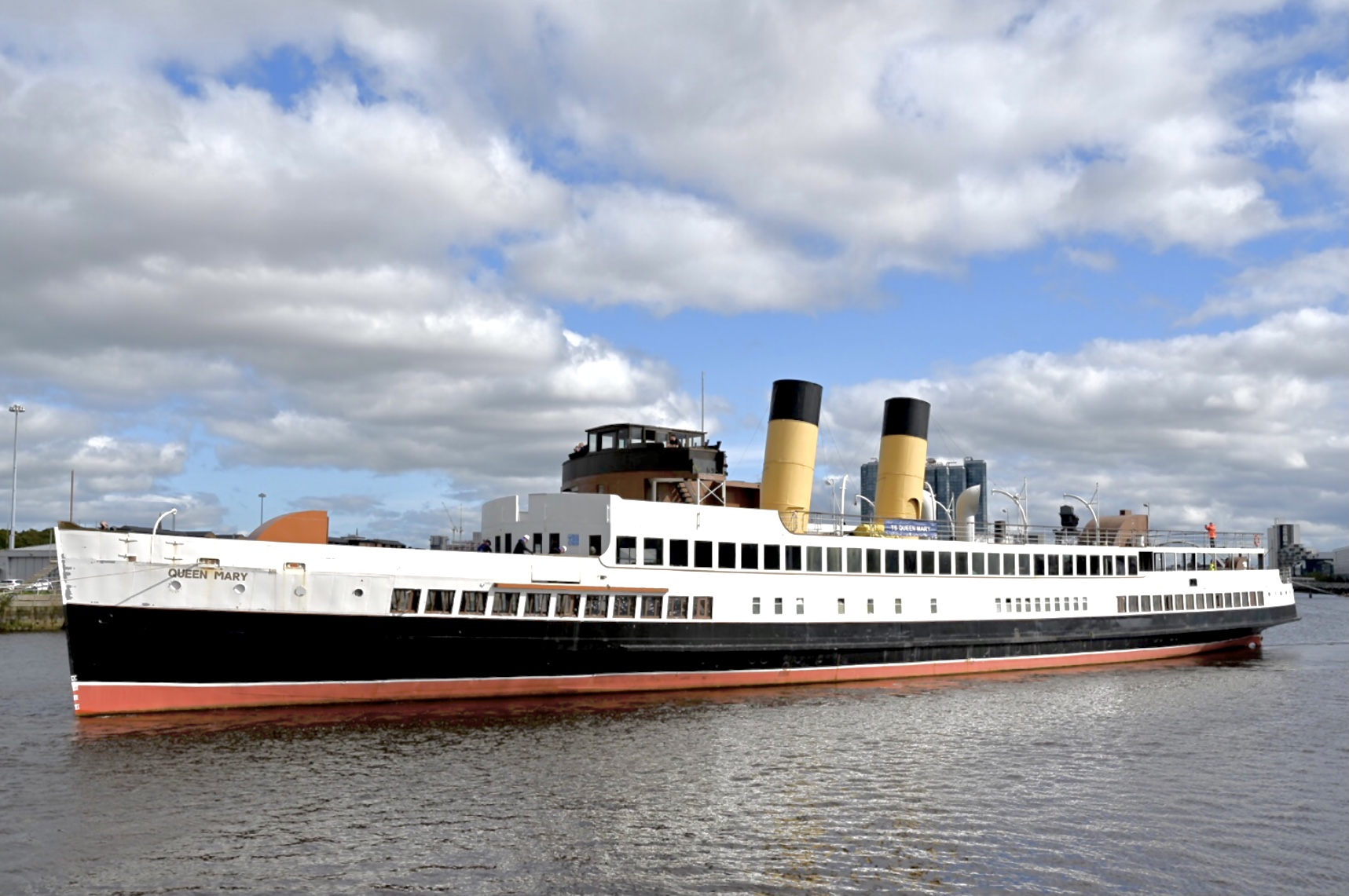By: Judy Vickers
She is the last of her kind in the world. In her heyday she carried British royalty and a US First Lady and in her hour of need she has attracted support from a princess, celebrities and a mysterious millionaire benefactor. This year the iconic Clyde steamer TS Queen Mary celebrates her 90th birthday, having been constructed in 1933 by shipbuilders William Denny in Dumbarton.
And like any 90-year-old, she has seen ups and downs in her life, from the highs of carrying 13,000 passengers each week as “Britain’s finest pleasure steamer” to the lows of lying rusting in the English port of Tilbury and threatened with scrappage. Her next decade looks set to be bright though as a multi-million pound restoration aims to have her cruising again, for the first time since 1977, in 2025. Her anniversary year has started well with a £1 million donation from a mystery benefactor in April, taking campaign funds to almost half their £10m target.
The Glasgow boat
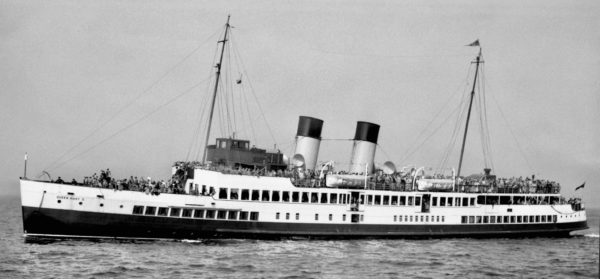
The charity which rescued the ship from Tilbury in 2015, Friends of TS Queen Mary, said at the time the “astonishing gift” would “turbo-charge” their efforts to ensure the much-loved vessel will sail again, added to a revival of a once-popular tradition – that of sailing “doon the watter”. From the early 19th century, steamers carried thousands of city folk out and away from the factories and the industrial urban landscape of their Glasgow home for day trips to the scenic parts of Ayrshire, particularly during Glasgow Fair Week in July.
Sailing “doon the watter” – the “watter” in question being the Clyde – was a familiar part of holiday life for many until the latter part of the 20th century when cheap airfares and package holidays abroad killed the trade. TS Queen Mary was the tenth (and final) turbine pleasure steamer built for Clyde service. She was the largest and most luxurious in the fleet and is now the last in existence. She was known as “the Glasgow boat” and sailed “doon the watter” from Glasgow to destinations such as Dunoon, Rothesay, Millport and Arran.
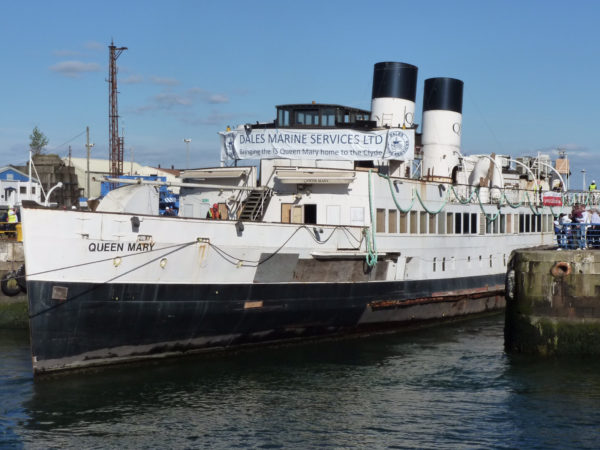
From the beginning her history was full of quirks – in the spring of 1935, at the request of Cunard White Star Line, TS Queen Mary was renamed Queen Mary II, so as to release the name Queen Mary for the liner then under construction at John Brown’s shipyard in Clydebank. She regained her original name in 1976 as the liner Queen Mary had retired from sailing. She hadn’t been in cruising service for long before war interrupted – she was called into service providing a lifeline mail and passenger service to the Scottish islands. Her wartime passengers included King George VI, Queen Elizabeth (the Queen Mother), the future Queen Elizabeth II, Princess Margaret and former US First Lady Eleanor Roosevelt. She returned to cruising duty after the war but the 1960s and 70s saw a decline in Clyde steaming’s popularity and her final sailing was in September 1977 before she was moored up in Greenock.
Then comes her most traumatic years. She was sold to Glasgow District Council in 1978 with the idea of converting her into a museum but funds weren’t available and she was sold on again several times before she was towed to London in 1981. In 1987 she underwent a £2.5m refurbishment and was moored at Victoria Embankment in London as a floating restaurant. In 2009, she had been sold yet again and was taken to Tilbury in Essex near London, from where she was due be taken to begin a new life in France as a floating restaurant and fitness centre. Lack of funds scuppered those plans and she was left to rot – by 2015 she had prohibition notices slapped on her, barring her from leaving the port until hundreds of thousands of pounds in essential repairs were carried out. Scrappage loomed – but help was at hand.
An iconic part of Scottish history
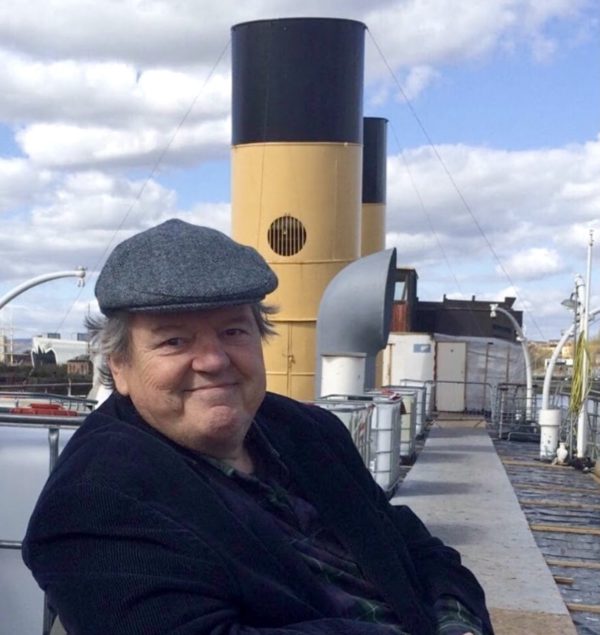
Friends of TS Queen Mary had been formed in 2012 by a group of enthusiasts alarmed by developments and keen to save such an iconic part of Scottish history. When the Port of Tilbury put the vessel up for sale, the Friends’ bid, funded by businessman Jim McColl, one of Scotland’s richest men, was accepted.
And this wasn’t the only time the Queen Mary was able to rely on friends in high places. Once in the hands of the charity, a campaign to have her repaired was launched in December 2015, headed by Harry Potter actor Robbie Coltrane. The Rutherglen-born star was a huge supporter of the TS Queen Mary until his death last year. “Robbie used to sail on the ship as a boy,” explains a spokesman for the Friends. “He had a very deep affection for the vessel. What many people don’t know is that Robbie was a massive fan of Clyde steamers, as well as classic ocean liners – not just the vintage cars, which most people associate him with. Robbie came on board as patron before the ship was brought back to Glasgow. He was very good friends with Sam Neill (a fellow actor who was born in Northern Ireland before moving to New Zealand as a boy). Sam also has an interest in ships and was delighted to become our Commonwealth patron, when Robbie approached him.”
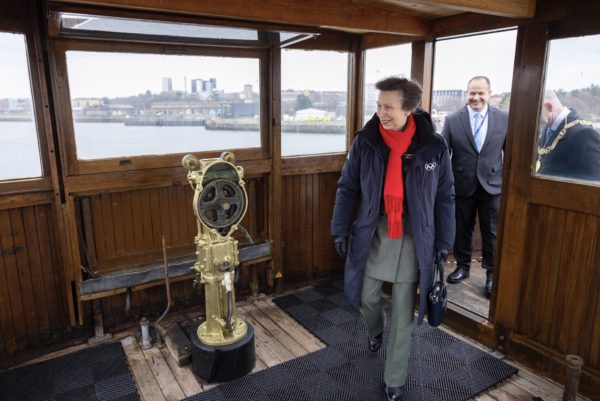
Funds flooded in and the Queen Mary was towed back home to the Clyde in an epic voyage along the west coast of the UK. Repairs began in 2016 with the idea of turning her into a static heritage centre at Pacific Quay. But in April last year, Princess Anne, the Princess Royal, who has been royal patron of the ship for four years, revealed plans to allow the ship to sail once again. The £1m anonymous donation will be used to construct new steel decks to ensure the ship complies with modern maritime safety requirements – one of the biggest structural undertakings of the ongoing work. Iain Sim, chairman of Friends of TS Queen Mary, said: “Our work continues to restore an iconic British ship whose proud history serving the Clyde rekindles many memories for tens of thousands of Scots and others across the world.”
Main photo: TS Queen Mary. Photo: David Millar.

